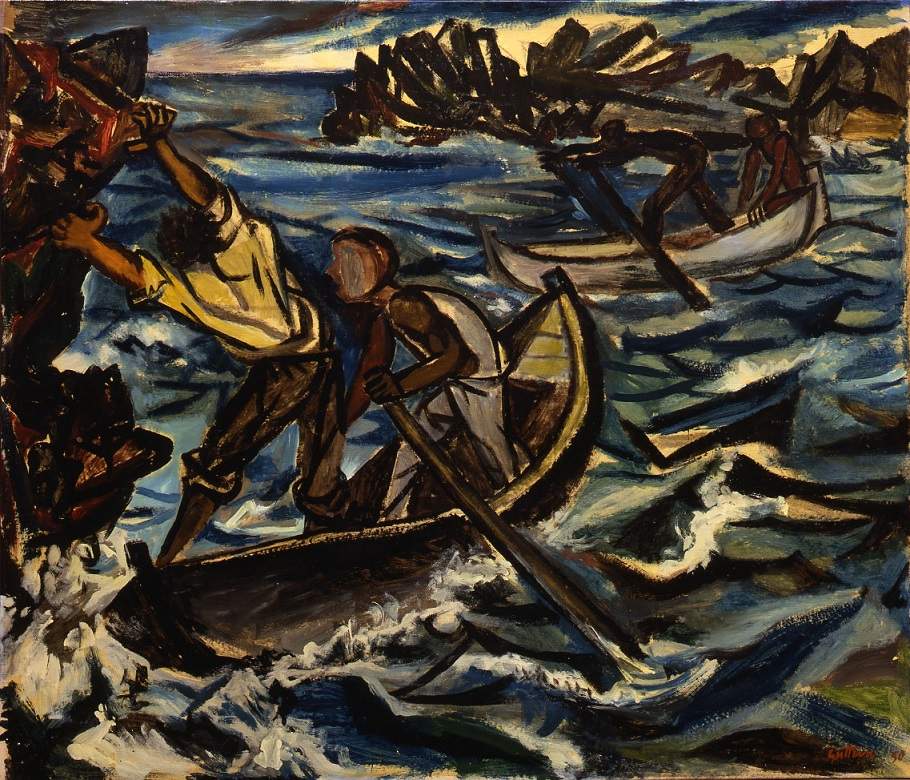Fontana, Burri, Guttuso and others: works from the 1950s and 1960s from Bank of Italy offices on display in Palermo
The exhibition Altre Stanze anni ’50s and ’60s, curated by Mariastella Margozzi and Morena Costantini, opened on December 21 at the Fondazione Sant’Elia, which will then host it until February 28, 2019. The works, which tell precisely the story of art between the 1950s and 1960s (in years that were fundamental for the development of Italian contemporary art), collected for the occasion and coming from various Italian branches of the Bank of Italy, arrive for the first time in Palermo.
A precious and varied heritage that has been built up over time, managing to tell the story of the development of Italian figurative art and the country’s social transformations. A collection destined for the representative environments of credit institutions, but which leaves the executive studios to travel through that same Italy that is part of the story. Art goes hand in hand with the recovery, the revival, the Italian “dream”; it tells of a country coming out of the war that is laboriously reborn in search of democracy, family well-being, and greater freedom. A period that it is reductive to define as only “lively”: it is “alive” and, at the same time, aware of the reality around it: it is the Italy of the first Sanremo Festival (1951), of the teacher Manzi who from TV (1954) teaches adults to read and write; Pasolini ’s “borgate” against the Dolce Vita and the economic miracle; the “cardboard suitcase” vsi jeans; of the Marshall Plan, of the comparison with the States, of the first washing machines and refrigerators; Enrico Mattei atENI and Adriano Olivetti among private individuals. And here we come to the world of art: from the figurative tradition, still present in the early 1950s, to informal abstractionism, the group show offers the opportunity to appreciate the compositions of the best-known Italian artists and the groups that were formed in those years.
“Other Rooms draws its title,” explains Mariastella Margozzi, “from a work by Corrado Cagli from 1950, which testifies to the exit of these works from the ’rooms’ in which they are usually placed, not visible to the public. Each of the works is unique in its own habitat and dialogue with it, but on this occasion they are offered together with the ambition of stretching threads that reconnect them to the flow of Italian art up to the end of the 1960s.” From Lucio Fontana to Franco Angeli, from Renato Guttuso to Carla Accardi, from Turcato to Burri, from Ugo Attardi to Enrico Baj, Giorgio De Chirico, Tano Festa: creative, affabulatory, not at all inclined to surrender their weapons, each convinced of his “sign”: each has something deep and intimate to communicate. The Bank of Italy’s collection does not have a precise guiding thread, it is not oriented toward this or that trend, but encompasses works acquired mainly on the national and international market, between the late 1980s and the 2000s, in response to a need for representation. It comes together in this exhibition, a kind of puzzle that makes an excellent contribution to the narrative of the history of Italian art in the two decades of the 1950s and 1960s.
Hours: Tuesday to Friday 9:30 a.m. to 6:30 p.m., Saturday and Sunday 10 a.m. to 6:30 p.m. Monday closed.
For all information you can visit www.palermocapitalecultura.it.
Pictured: Renato Guttuso, Boats in the Storm, 1950. Oil on canvas, cm. 91x108
 |
| Fontana, Burri, Guttuso and others: works from the 1950s and 1960s from Bank of Italy offices on display in Palermo |
Warning: the translation into English of the original Italian article was created using automatic tools. We undertake to review all articles, but we do not guarantee the total absence of inaccuracies in the translation due to the program. You can find the original by clicking on the ITA button. If you find any mistake,please contact us.





























